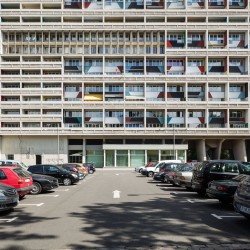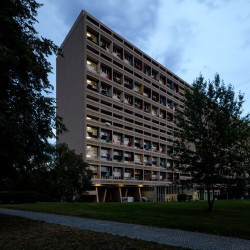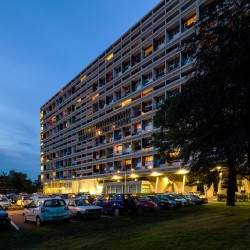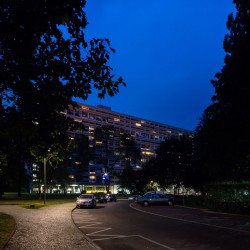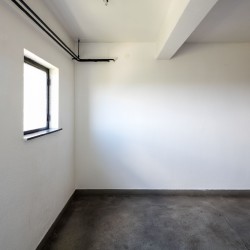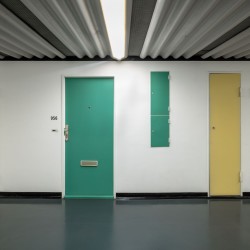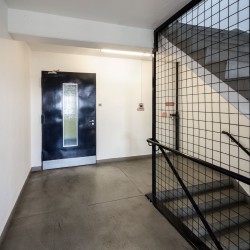photos: © Federico Covre . + divisare
L’Unité d’Habitation in Berlin shot by Federico Covre.
_
–
In 1957 Le Corbusier was invited by the Berlin government to participate in an international building exhibition that presented new functional post-war housing types. Five years earlier the Swiss-born French architect had realized his concept of “Unité d’Habitation” for the first time in Marseille. Intended to function as a vertical city, this type of high-rise structure expressed his visions on urbanism, architecture and landscaping. The construction of one of these so-called “machines for living” in Berlin was a must, but its size too large to fit into the Hansaviertel quarter, where the exhibition took place. Therefore the Berlin version of an “Unité d’Habitation” – named “Corbusierhaus” (Le Corbusier-building) was built on a small hill near the Olympic stadium which was inaugurated in 1936.
The 530 apartments are mostly double-storey flats. The entrances are located on 10 corridors named “internal streets”. The house was built within just 18 months, all structural elements being produced on the spot. In addition a specific landscaping concept was designed to create a green belt. With its 53 meters in height, 141 meters in length and 23 meters in width, the house nowadays rises between large trees, its colourful verandas visible from the distance. In 1995 it was declared a protected monument.
Le Corbusier planned and realized 5 Unités d‘Habitation. All buildings are based on experiences acquired during the construction of the first Unité in Marseille which therefore serves as the prototype. Though all „machines for living“ give a similar impression at first sight, they differ in size and technical aspects due to economic constraints and building regulations at the respective sites.
http://corbusierhaus-berlin.org






